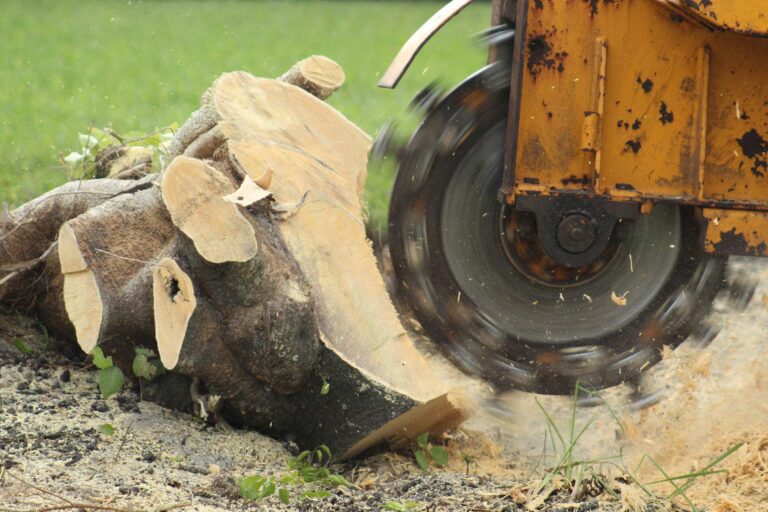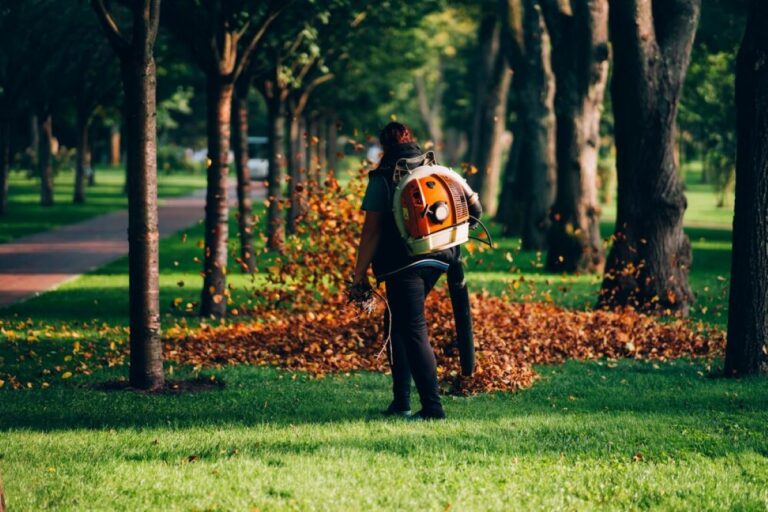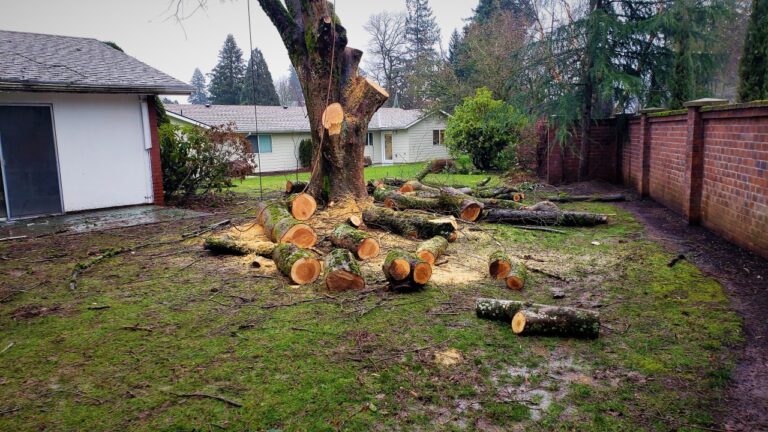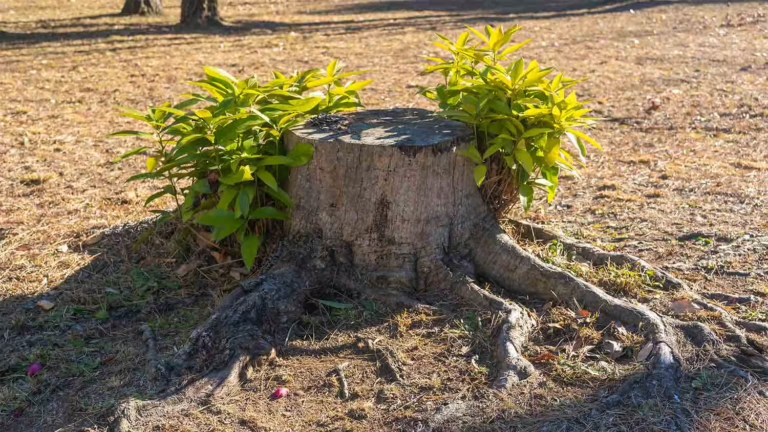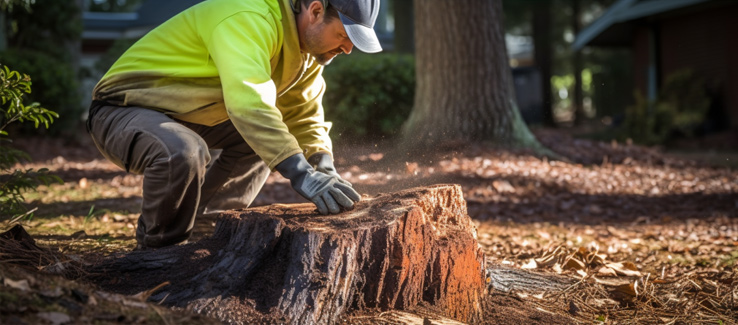If you have a tree stump in your yard that is an eyesore or hindering your landscaping plans, stump grinding is an effective solution. This step-by-step guide will walk you through the process of grinding a stump, from understanding the basics to post-grinding clean-up and maintenance. By following these instructions, you can safely and efficiently remove a stump and reclaim your yard.
Understanding the Basics of Stump Grinding
Before diving into the stump grinding process, it is important to have a clear understanding of what stump grinding entails and why it is necessary.
Stump grinding is not just a practical solution for removing unwanted tree stumps; it is also an environmentally friendly option. Rather than digging up the entire stump and its roots, which can disturb the surrounding soil and vegetation, stump grinding reduces the stump to wood chips that can be used as mulch or left to decompose naturally. This process promotes sustainability and minimizes the impact on your landscape.
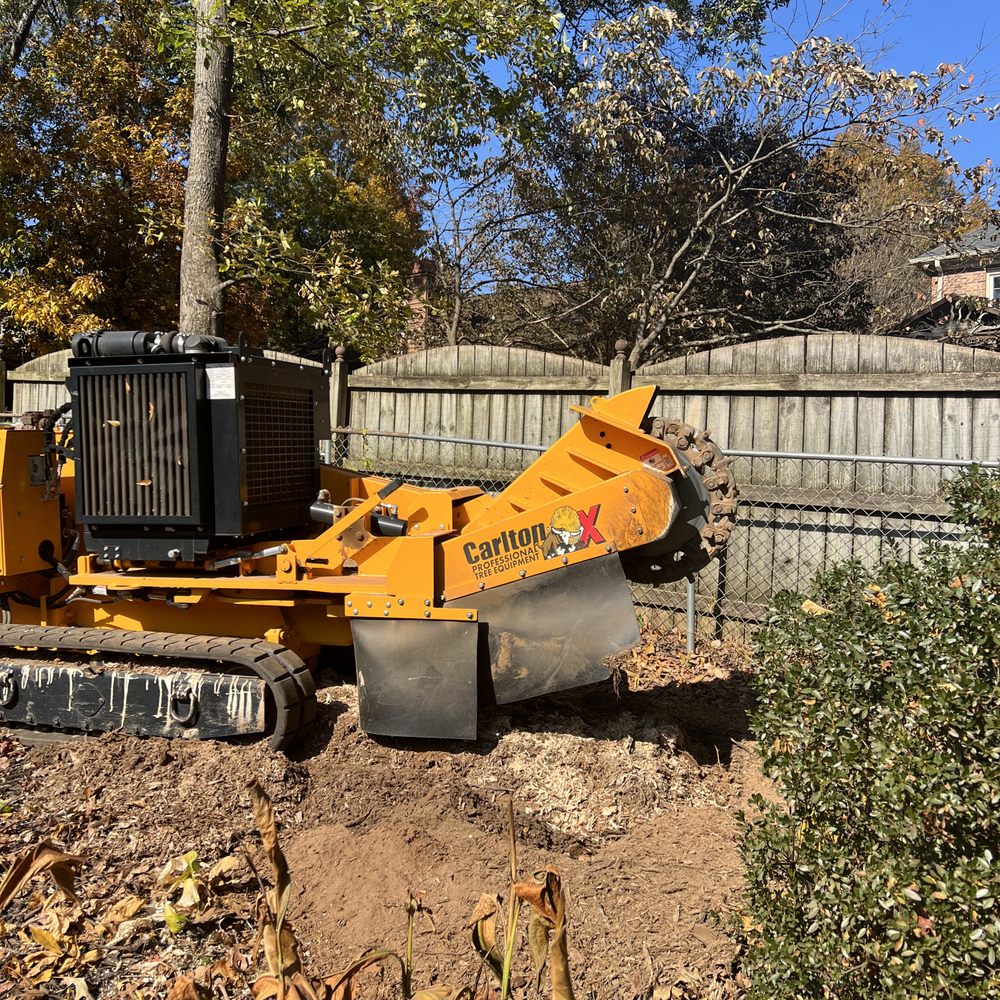
What is Stump Grinding?
Stump grinding is the process of removing a tree stump by using a specialized machine called a stump grinder. The grinder features a rotating cutting disc that grinds the stump and its roots into wood chips.
As the stump grinder works its way through the stump, it gradually reduces it to small wood particles that blend into the soil, enriching it with organic matter. This natural decomposition process not only eliminates the visible remnants of the tree but also improves the overall health of your garden or lawn. Learn more about natural decomposition process at https://byjus.com/biology/what-is-decomposition/
Why is Stump Grinding Necessary?
Leaving a tree stump in your yard can have various negative consequences. Stumps can be a tripping hazard, obstruct your landscaping activities, and attract pests. Additionally, stumps left in the ground can continue to grow, potentially causing damage to nearby structures and utilities.
By grinding the stump, you eliminate these risks and create a clean and level surface in your yard.
Furthermore, removing tree stumps can enhance the aesthetic appeal of your outdoor space. Once the stump is ground down and the area is restored, you have the opportunity to replant grass, flowers, or even a new tree in place of the old stump. This rejuvenation not only improves the visual aspect of your landscape but also allows for new growth and landscaping possibilities.
Safety Measures to Consider Before Grinding a Stump
Prior to starting the stump grinding process, it is essential to prioritize safety. Taking the necessary precautions will help prevent accidents and injuries.
Stump grinding can be a hazardous task if not approached with caution. One must always be mindful of potential risks and take proactive steps to mitigate them. By following safety guidelines and using the appropriate equipment, you can ensure a smooth and incident-free stump grinding experience.
Personal Protective Equipment for Stump Grinding
When operating a stump grinder, it is crucial to wear proper personal protective equipment (PPE). This includes safety goggles, ear protection, gloves, and sturdy footwear. The PPE will protect you from flying debris and potential hazards. Click here to learn more about personal protective equipment (PPE).
Additionally, consider wearing a hard hat to safeguard your head from any overhead dangers. Stump grinding can sometimes dislodge objects from the ground, making head protection a vital component of your safety gear.
Preparing the Area for Stump Grinding
Before you begin grinding the stump, clear the surrounding area of any obstacles or debris that could impede your progress. This includes rocks, branches, or other items that could cause damage to the grinder or pose a safety risk.
Mark out the perimeter around the stump to ensure you have enough space to operate the grinder comfortably. Remove any plants or vegetation in the vicinity to prevent them from being damaged during the grinding process.
Furthermore, it is advisable to inspect the ground for any hidden utility lines or cables that could be damaged by the grinding equipment. Contacting your local utility companies to mark the locations of underground utilities can prevent costly accidents and service disruptions.
Tools and Equipment Needed for Stump Grinding
Having the right tools and equipment is essential for a successful stump grinding project. Depending on your preference and the size of the stump, you can choose between manual or power tools.
Before embarking on a stump grinding project, it’s important to assess the condition of the stump and the surrounding area. Factors such as the type of tree, soil composition, and presence of rocks or debris can impact the tools and equipment needed for the job. Conducting a thorough inspection will help you determine the most effective approach to stump removal.
Manual Stump Grinding Tools
Manual stump grinding tools include a mattock, shovel, and axe. These tools require physical exertion and are suitable for smaller stumps or areas with limited accessibility. Manual methods may take longer but can still produce effective results.
When using manual tools for stump grinding, it’s important to wear appropriate safety gear, such as gloves, goggles, and sturdy footwear. Clearing the area around the stump of any obstacles or debris will ensure a safer working environment and prevent potential accidents during the grinding process.
Power Tools for Stump Grinding
Power tools, such as a stump grinder, offer a more efficient and time-saving approach to stump removal. Stump grinders come in various sizes, so choose one that matches the diameter and depth of the stump you need to remove. These machines are equipped with sharp blades or cutter wheels that can reduce a stump to wood chips quickly.
Before operating a stump grinder, familiarize yourself with its controls and safety features. Proper maintenance of the machine, including sharpening or replacing blades as needed, will ensure optimal performance and a smoother grinding process. Additionally, following manufacturer guidelines for usage and safety precautions is crucial to prevent accidents and achieve successful stump removal.
The Step-by-Step Process of Stump Grinding
Now that you have a solid understanding of the basics and have gathered the necessary tools, let’s dive into the step-by-step process of grinding a stump.
Assessing the Stump
Before starting the grinding process, assess the stump carefully. Check for any obstacles, such as rocks or metal, that could impact the effectiveness of the grinder or pose a safety risk. Take note of any nearby structures or utilities that may need protection during the grinding process.
Additionally, it’s important to consider the type of tree that the stump belongs to. Different tree species have varying root structures, which can affect the difficulty and duration of the grinding process. For example, stumps from shallow-rooted trees like birch or poplar may be easier to grind compared to stumps from deep-rooted trees like oak or pine.
Measure the diameter and depth of the stump to ensure you select the appropriate size stump grinder. This will help you determine the power and capacity needed to effectively grind the stump.

Starting the Grinding Process
Once you have assessed the stump and prepared the area, it’s time to start grinding. Position the stump grinder above the stump, ensuring that the cutter wheel or blade is in line with the stump’s center.
Before engaging the grinder’s engine, it’s crucial to wear the necessary safety gear, including goggles, gloves, and ear protection. Stump grinding can produce flying debris and loud noise, so protecting yourself is essential.
Engage the grinder’s engine following the manufacturer’s instructions and carefully lower the cutting disc onto the stump. The cutting disc should make contact with the stump at a slight angle to ensure efficient removal. Manually maneuver the grinder back and forth, gradually working through the stump and its roots. Keep an eye on the grinder’s fuel levels and refill as necessary.
Finishing the Grinding Process
As you continue grinding, the stump will gradually be reduced to wood chips. Adjust the depth and angle of the grinder as needed to ensure efficient removal. Work in a methodical pattern, moving across the stump until only sawdust remains.
It’s important to note that larger stumps may require multiple passes with the grinder to ensure complete removal. Take breaks as needed to prevent overheating of the equipment and to give yourself a chance to assess the progress.
Once the grinding is complete, turn off the grinder’s engine and allow the cutter wheel or blade to come to a complete stop before moving the machine away from the stump. Clean up any remaining wood chips and debris, ensuring the area is safe and tidy.
Post-Grinding Clean-up and Maintenance
After successfully grinding the stump, you are left with a pile of wood chips and sawdust. Here are the necessary steps to clean up and maintain the area.
Stump grinding is a highly effective method for removing tree stumps, but the clean-up and maintenance that follow are crucial for the overall success of the project. Proper disposal of the wood chips and sawdust is essential to prevent any potential hazards or unsightly mess in your yard. If you choose to use the wood chips for mulch or compost, ensure they are spread evenly to provide nutrients to your garden beds.
Cleaning Up After Grinding
Collect the wood chips and sawdust and dispose of them appropriately. You can use them for mulch or compost if desired. Rake the area to remove any remaining debris and level the ground.
Once the immediate clean-up is complete, consider adding a layer of fresh topsoil over the area where the stump once stood. This will help promote healthy growth for any new plants or grass you plan to introduce. Additionally, watering the area lightly can help settle the soil and encourage the decomposition of any remaining wood particles.
Maintaining the Area Post-Grinding
While stump grinding eliminates the immediate problem, there are further steps to ensure the long-term success of your landscaping. Consider filling the hole left by the stump with topsoil and planting grass or flowers to restore the aesthetic appeal of the area.
Regularly monitor your yard for any new sprouts or regrowth from the stump and promptly remove them to prevent the reappearance of the stump.
By following this step-by-step guide, you can effectively grind a stump and create a beautiful, functional yard free from unsightly obstructions. Remember to prioritize safety throughout the process and carefully maintain the area post-grinding to ensure long-lasting results.
Other resources: Emergency Stump Removal Services Quick and Efficient Solutions

